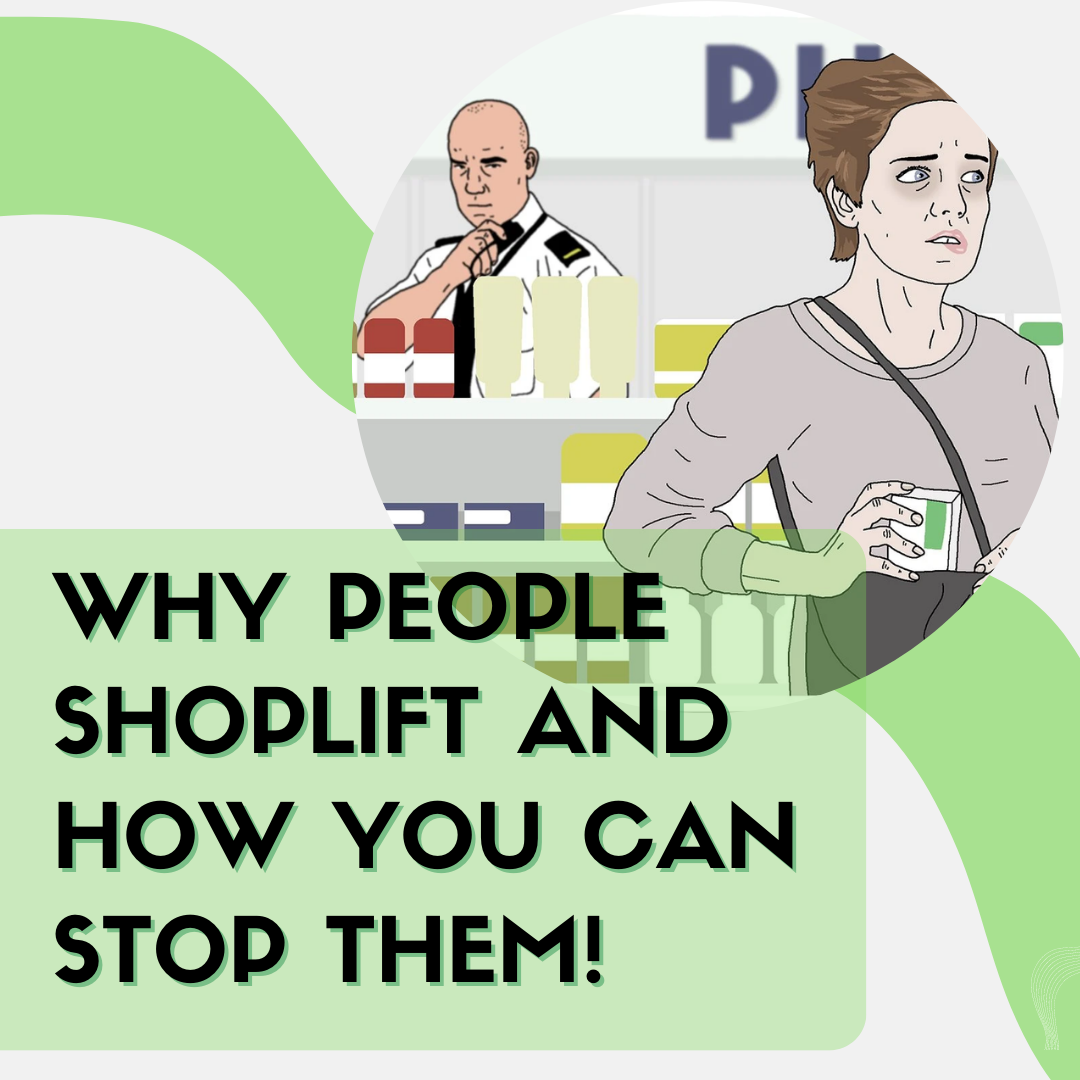
Why people shoplift and how you can stop them!
Why do people shoplift? Are some people more likely to shoplift than others?
It is far from easy to identify the shoplifters who caused the USA’s $100 billion retail shrink problem. There’s no single method for identifying shoplifters from paying customers. It’s critical to approach this subject neutrally and without prejudice because the fact is simple:
You cannot tell if someone is a shoplifter just by the way they look! (Unless of course their outfit is packed with your merchandise and they are running out the door)
No one ethnicity, gender, sexual orientation, age, or socioeconomic status is more likely to be a shoplifter. Shoplifters come in all shapes, sizes and walks of life.
You cannot tell a shoplifter apart by how they look, you have to focus on their motivations, targets, and how they act. Shoplifters are usually one (or more) of the following kinds of people:
-
The Freebie-Finder
These people are paying customers who take what they can when they can because they can. A Freebie-Finder will take items that are not being carefully watched or security-tagged (and labeled). This might be at a self-checkout or slipping a product into a different one that they are purchasing. This thief may even be one of your loyal and frequent customers who think they deserve a discount for their continued patronage.
-
The Money-Maker
These people are stealing items and then boosting them to make money for themselves. These “Money Makers” are most commonly those who are desperate and struggling to feed their habits. People who want to make a few dollars on shoplifted merchandise usually target big, crowded stores with low supervision. They target your merchandise with higher resale value such as electronics, jewelry, beauty products, and apparel.
-
The Making-Ends-Meet-er
With prices skyrocketing, some people steal just to feed, clothe, and take care of themselves and their families. These people target food, clothing, health products, baby products, and sometimes toys to make ends meet. Usually, these people do not want to steal but have turned to it out of necessity.
-
The Sticky-Fingers
“Kleptomania” is when someone has the compulsion to steal products. This is a mental health condition that affects a person’s impulse control and creates a shoplifting addiction. These people have “sticky fingers” and cannot help but take whatever they can because they cannot help it. These thieves take anything they can and for no particular reason other than to steal it. Usually, these products would be anything small and concealable.
-
The Triple-Doggie-Darer
These people are shoplifting on a whim. This might be because their friends dared them to, or they are inebriated and want to impress, or they’re being peer pressured. Thrill-seeking shoplifters are young adults or teenagers. This spur-of-the-moment thief usually targets small, inexpensive items or anything that may hold social value to the group they desperately want to fit into. A group of young people also may want to steal alcoholic beverages since purchasing is not an option for them!
-
The Oopsie-Daisy-er
This unintentional shoplifter accidentally leaves without paying for something because they are forgetful, elderly, or distracted by young children (oops!). Whether a child has placed an item into their bag, they forgot an item on the bottom of the shopping cart, or an elderly man walks out wearing the sunglasses he had just tried on, these people have mistakenly shoplifted your items.
Across all shoplifters (except for the one who genuinely has no idea they are stealing), there are a few tell-tale signs of someone removing unpaid products from your store. The following is a list of suspicious behaviors that you should be aware of.
Some suspicious behavior you should look out for:
- Constantly glancing around and watching the cashier or salesman more than actually shopping.
- Wearing overly-heavy, bulky apparel in the summer or unneeded layers.
- Carrying a large bag or backpack or holding an umbrella when there’s no rain. Maybe they are even stuffing their reusable shopping bag full!
- Short or strangely spaced steps when walking might be a sign that someone is hiding stolen property on their body. (Be careful if this is your only “clue” that someone might be stealing from you. Some people may have a mobility problem or disability causing them to walk differently and it would be embarrassing (and potentially very problematic) to call them out on that.)
- Bringing many things into a dressing room and leaving with only one or none of them.
- The customer’s eyes are scanning the store and are not on what they are doing with their hands.
- Showing nervousness and picking up random objects without any thought.
- Coming into the store all the time and seemingly never buying anything.
- Coming into the store in pairs or larger groups. One chats up a salesperson while the other “browses” or stands in big clumps around the merchandise with one person in the middle.
Some of these loss prevention tactics are:
- Training employees on what behavior to look out for and how to (or not to) approach a shoplifter. You should also cover best practices for security tags and labels.
- Labels for less expensive items and security tags for higher-ticket goods are used in Electronic Article Surveillance (EAS) systems to keep track of stock and alert staff when unpaid merchandise leaves the store. These are great investments that pay for themselves!
- Thoroughly inventorying merchandise and using that data to determine the at-risk items and adjust how many are kept on the floor. Instant RFID inventory tracking is a great way to do this right at checkout!
- A strong store layout that eliminates hidden spaces and blindspots and places high-value merchandise and frequently stolen products in plain sight. Make sure your store’s entrances and exits are well-monitored. Some stores have had success with putting their checkout counter right next to the doors.
- Making sure you always provide above-and-beyond customer service.
- Investing in security cameras and CCTV surveillance.
- For larger sections with many higher-cost items, it may be wise to invest in lockable screens, tethered cables, and cabinet locks.
No matter who is shoplifting from your store or why – prevention is the key to protecting your merchandise and avoiding raising prices or losing profit.


